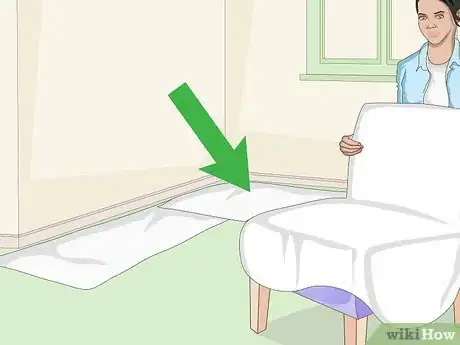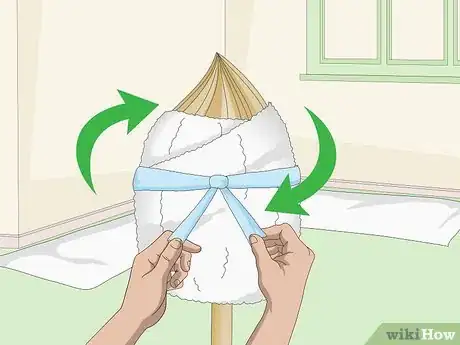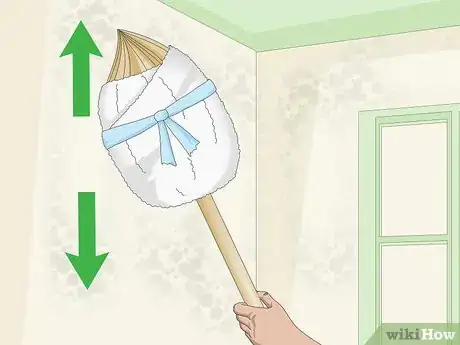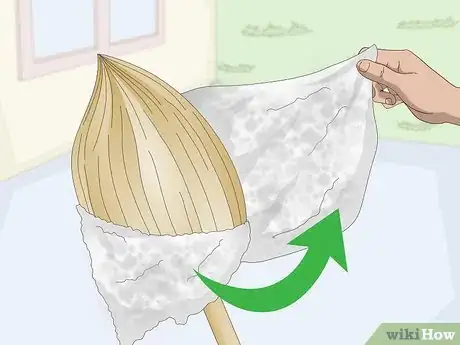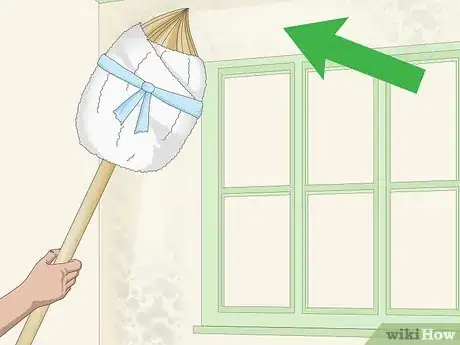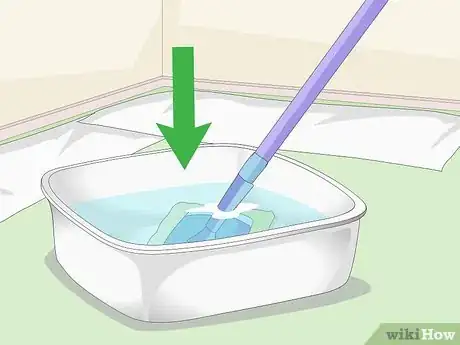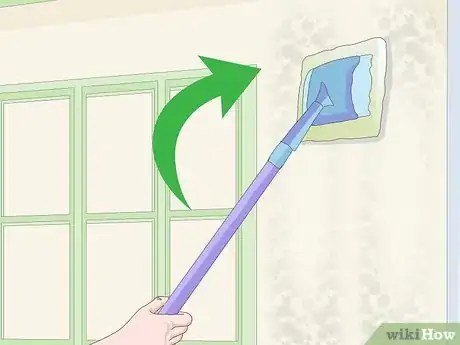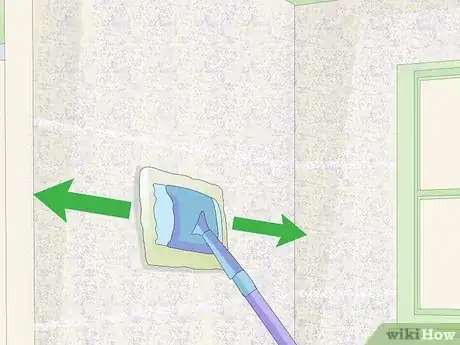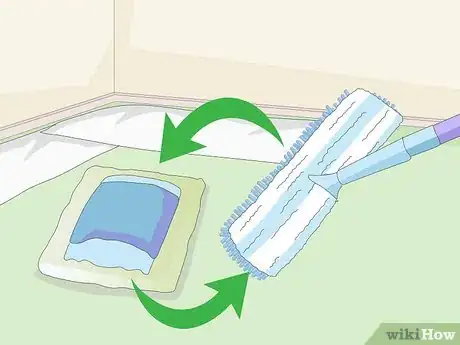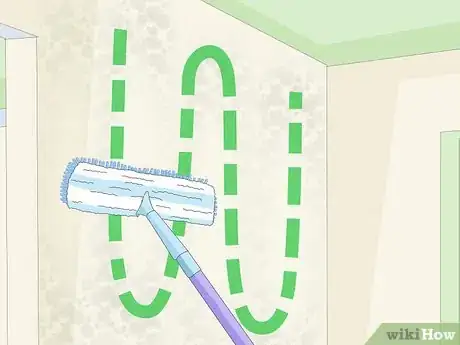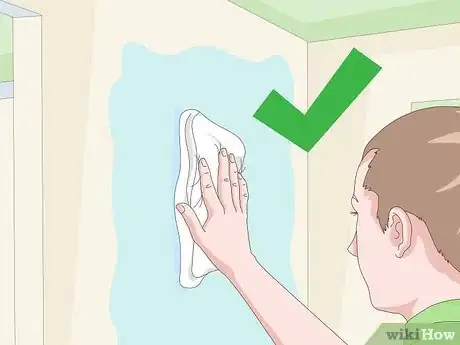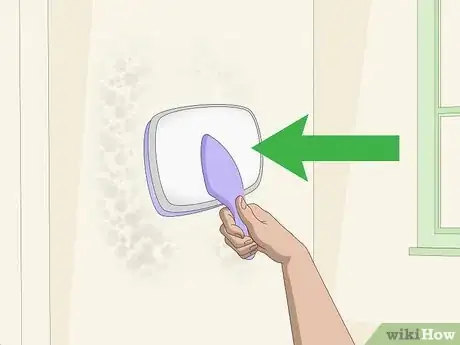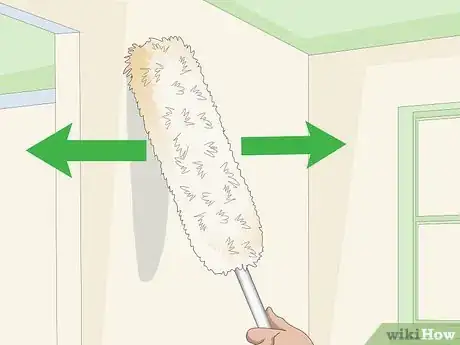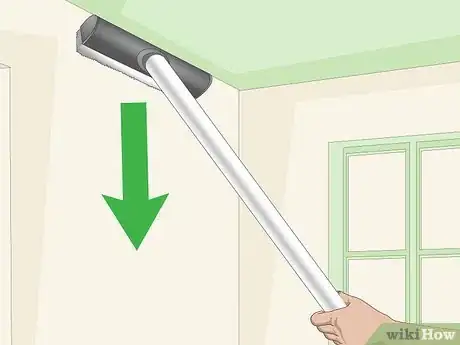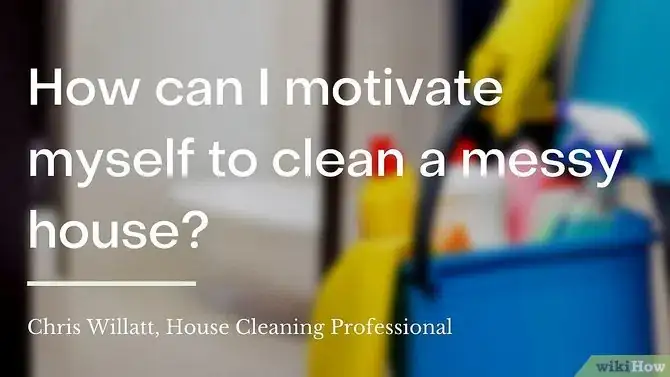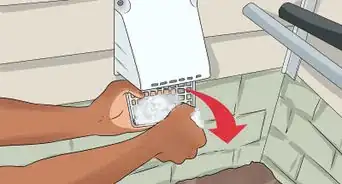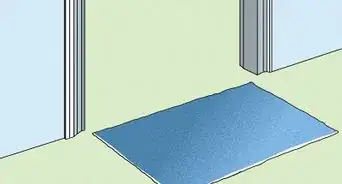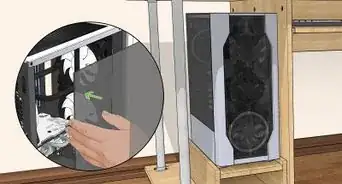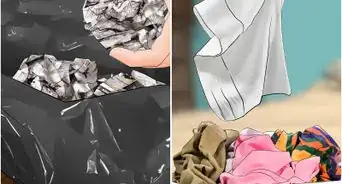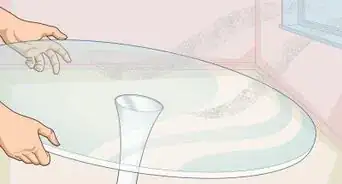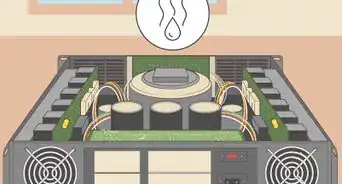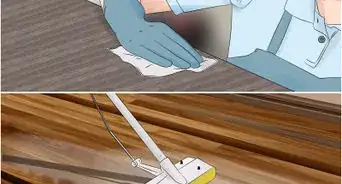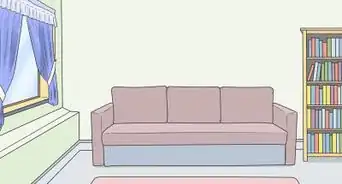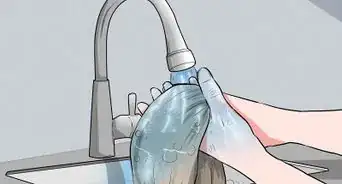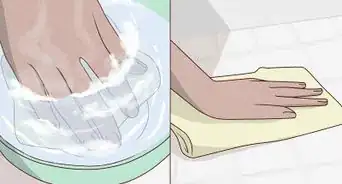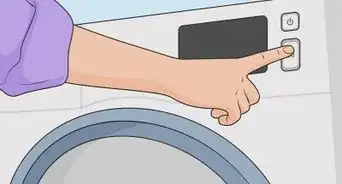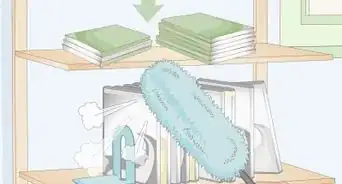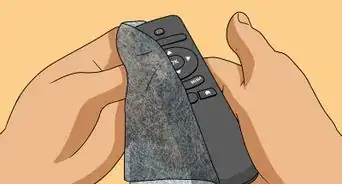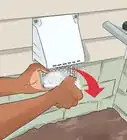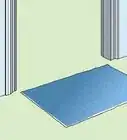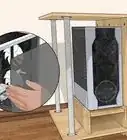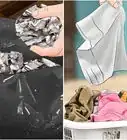This article was co-authored by Chris Willatt. Chris Willatt is the owner and founder of Alpine Maids, a cleaning agency in Denver, Colorado started in 2015. Alpine Maids has received Angie's List Super Service Award for three years in a row since 2016 and has been awarded Colorado's "Top Rated Local House Cleaning" Award in 2018.
There are 8 references cited in this article, which can be found at the bottom of the page.
This article has been viewed 42,493 times.
There are many ways to dust walls. You could use a lambswool duster, a broom covered with a towel, a damp mop, or an electrostatic dry dust cloth. Whatever tool you use, move carefully across the wall in order to ensure every part of it is totally cleared of dust. Use extra care in the corners, where cobwebs often collect.
Steps
Using a Broom and Towel
-
1Protect the floor and furniture. Place a drop cloth on the floor beneath the walls you will be cleaning. Pull furniture away from the walls and cover it with a sheet.[1]
-
2Cover a broom with a towel. With your broom’s head pointed up and its handle pointed down, lay a rag or towel over the broom head. Ensure as many of the bristles as possible are covered by the towel. To prevent the towel from falling off during use, wrap a piece of string around the broom head at its thickest point.[2]
- If possible, use a microfiber towel.
Advertisement -
3Dust a vertical strip down the wall. Place the broom head against a corner of the wall where it meets the ceiling. Drag the broom down along the wall in a slow, steady motion. After you’re done, evaluate the section of the wall you just dusted. If any dust remains, run the broom along the strip again.[3]
-
4Switch the towel out as needed. At some point, the towel will become too dusty and dirty to be effective. Evaluate the towel after moving about one-third of the way across the wall. If it is excessively dusty, unbind it from the broom and shake it out over the rubbish bin. Toss it in your laundry basket and cover the broom with another towel just as before.[4]
-
5Remove dust from the rest of the wall. Move to the space on the wall next to the area you just cleaned. Just as before, place the broom head against the top of the wall and move it down the wall in a vertical strip.[5]
- Continue in this way long the entire wall. When you’ve finished the first wall, move to the one next to it and continue the process until the walls have all been dusted.
Using a Mop to Remove Dust
-
1Dampen the mop. Fill a mop bucket with warm, soapy water. Dip the mop into the bucket, then remove it and wring it out. The mop should not drip, but it should be moist to the touch.[6]
- The best type of mop to use is a sponge mop, but you could use a regular mop, too.
-
2Move the damp mop up and down along the wall. You could start on the left and move to the right, or the other way around, but always start at the top of the wall and move to the bottom. This will ensure that the dust from the upper area of the wall will not fall down to cover an area you already cleaned.[7]
-
3Move along the direction of any wallpaper seams. If you’re dusting a wall that has wallpaper on it, move along the direction of the seams. Typically, this will also mean moving along an up-down axis. But if the wallpaper seams run horizontally across the wall, move the mop along the wall from side to side.[8]
Combining Dry and Wet Cleaning
-
1Equip a flat head mop with a dry dusting head or cloth. Ideally, the mop head or cloth will be made of microfiber. The exact process by which you change the dusting cloth or mop head depends on the manufacturer. Generally, however, the process is as simple as laying the new cloth over the flat head of the mop, then moving the clips that bind it to the top of the mop head.[9]
- Other flat head mops have replaceable heads that simply slide on.
- Microfiber cloth excels at collecting dust and is minimally abrasive.
EXPERT TIPChris Willatt is the owner and founder of Alpine Maids, a cleaning agency in Denver, Colorado started in 2015. Alpine Maids has received Angie's List Super Service Award for three years in a row since 2016 and has been awarded Colorado's "Top Rated Local House Cleaning" Award in 2018.House Cleaning Professional
 Chris Willatt
Chris Willatt
House Cleaning ProfessionalUse a flat mop if your walls are textured. Chris Willatt, the owner of Alpine Maids, says: "Textured walls can build up a lot of dust over time. A microfiber dust mop is great for clearing that out, although any flat mop will work. If you don't have one, you can even run a microfiber cloth over the walls to dust by hand."
-
2Move along the wall in a “W” pattern. Moving along the wall in a “W” pattern will ensure you are dusting the entire wall. Start at the top left corner of the wall, then move down and over, then up and over in a continuous motion.[10]
-
3Give the wall a gentle wash. Once you’ve dusted the entire wall with the the flat head mop, spray some water on a microfiber cloth. Wipe the wall down using the damp microfiber cloth, especially on areas where dust seems to have been left behind.[11]
Finding Other Ways to Dust Walls
-
1Wipe the wall with an electrostatic dry dust cloth. Electrostatic dry dust cloths use static electricity to attract and trap dust. Place the cloth on the dusty wall and move it back and forth. Dispose of the cloth when you’re done cleaning the wall.[12]
-
2Dust the wall with a lambswool duster. A lambswool duster is one of the best options for dusting walls. Because of its elongated design, the best way to use the lambswool duster on walls is to place it in a vertical orientation in the leftmost corner of the wall, then drag it across the wall to the other corner. If necessary, use a ladder as you move across the room.[13]
- After dusting the first horizontal strip of the wall, drag the lambswool duster back across the wall in the opposite direction. Dust along a path just below that of the first. Continue in this way until the wall is completely dusted.
-
3Use a vacuum to dust the wall. Attach a wall brush extension to your vacuum. Then, vacuum the entire surface of the wall. Move the vacuum’s wall brush extension from the top edge of the wall where it meets the ceiling down to the base of the wall. This will allow you to clean the wall in a complete and consistent manner.[14]
- A wall brush extension is a long tube which links the suction end of your vacuum to bristled opening on the other end.
- Using the wall brush extension will prevent your wall from being damaged as the vacuum tube moves across it.
Expert Q&A
-
QuestionHow can I motivate myself to clean a messy house?
 Chris WillattChris Willatt is the owner and founder of Alpine Maids, a cleaning agency in Denver, Colorado started in 2015. Alpine Maids has received Angie's List Super Service Award for three years in a row since 2016 and has been awarded Colorado's "Top Rated Local House Cleaning" Award in 2018.
Chris WillattChris Willatt is the owner and founder of Alpine Maids, a cleaning agency in Denver, Colorado started in 2015. Alpine Maids has received Angie's List Super Service Award for three years in a row since 2016 and has been awarded Colorado's "Top Rated Local House Cleaning" Award in 2018.
House Cleaning Professional
References
- ↑ https://www.apartmenttherapy.com/how-to-wash-your-walls-apartment-therapy-tutorials-215094
- ↑ https://www.apartmenttherapy.com/how-to-wash-your-walls-apartment-therapy-tutorials-215094
- ↑ https://www.apartmenttherapy.com/how-to-wash-your-walls-apartment-therapy-tutorials-215094
- ↑ https://www.apartmenttherapy.com/how-to-wash-your-walls-apartment-therapy-tutorials-215094
- ↑ https://www.apartmenttherapy.com/how-to-wash-your-walls-apartment-therapy-tutorials-215094
- ↑ http://www.goodhousekeeping.com/home/cleaning/tips/a24221/get-rid-of-dust/
- ↑ http://www.goodhousekeeping.com/home/cleaning/tips/a24221/get-rid-of-dust
- ↑ http://www.goodhousekeeping.com/home/cleaning/tips/a24221/get-rid-of-dust
- ↑ http://cleanmyspace.com/10-handy-dusting-tips/
- ↑ http://cleanmyspace.com/10-handy-dusting-tips/
- ↑ http://cleanmyspace.com/10-handy-dusting-tips/
- ↑ http://www.housecleaningcentral.com/en/cleaning-tips/living-area/clean-wall-paper.html
- ↑ http://www.consumerreports.org/cleaning/best-dusting-tools-for-spring-cleaning/
- ↑ https://cleaning.tips.net/T004148_Dust_Your_Wallpaper_Regularly.html
About This Article
One easy way to dust your walls is using a mop. Fill a bucket with warm, soapy water and dip the mop in it. Wring it out so it's just damp, not dripping, and move it up and down the walls to remove any dust on them. If you have a flathead mop with a microfiber head, you can dust the walls dry instead of using soapy water. If you don't have a mop at all, wrap a towel around the head of a broom, tie something around it to hold it in place, and dust your walls with the towel. There are also wall brush extensions you can put on the end of your vacuum so you can vacuum your walls to dust them. For more expert cleaning tips, check out the full article!
